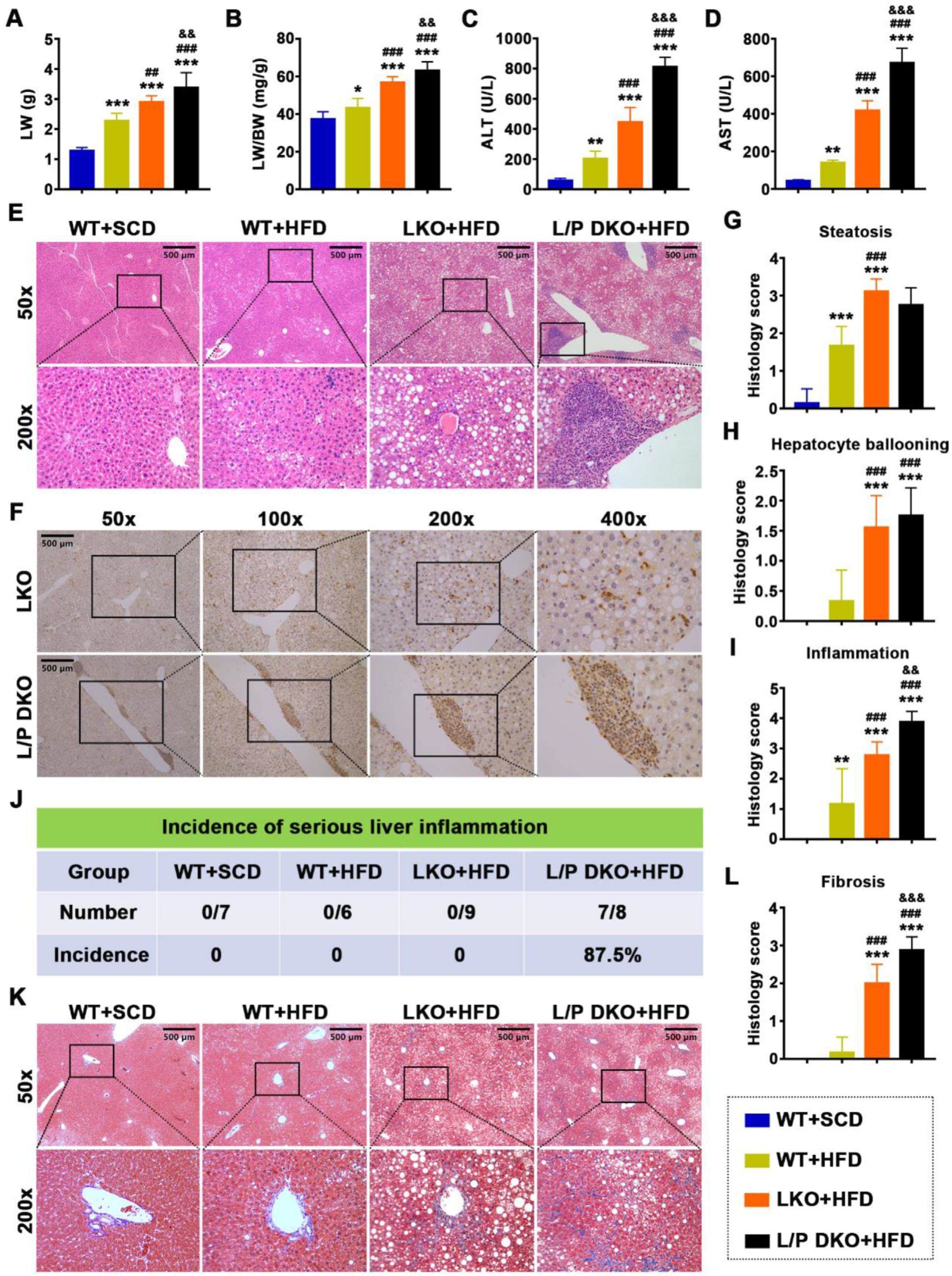
A novel mouse model of PEDF-associated serious liver inflammation, hepatic tumorigenesis and cardiovascular injury mimics human nonalcoholic steatohepatitis


There are no approved therapeutic drugs for nonalcoholic steatohepatitis (NASH) due to the many bottlenecks, including the lack of preclinical animal models that can perfectly mimic human NASH features, such as systemic metabolic disorders, hepatic steatosis, intense liver inflammation and fibrosis, liver tumorigenesis, and cardiovascular complications. Pigment epitheliumderived factor (PEDF) is a lipid metabolism regulator with high expression in the liver, and its reduced expression in the liver is closely related to the development of nonalcoholic fatty liver disease (NAFLD). Besides, high-fat diet (HFD)-fed low-density lipoprotein receptor knockout (LDLR knockout, LKO) mice are often used as animal models to study atherosclerosis and fatty liver.5 Here, we attempt to further knock out PEDF in HFD-fed LKO mice to induce premature development of inflammation and fibrosis, leading to a better NASH model. The results showed that HFD-fed LDLR/PEDF double knockout (LDLR/PEDF DKO, L/P DKO) mice can ideally mimic the disease progression and pathological characteristics of human NASH, not only show systemic changes but also experience disease progression from mild to severe NASH accompanied by serious liver inflammation, tumorigenesis, and cardiovascular injury. The multiomics analysis and related validation results suggest that PEDF deficiency is involved in the occurrence and development of NASH by affecting lipid and glutathione metabolism.
